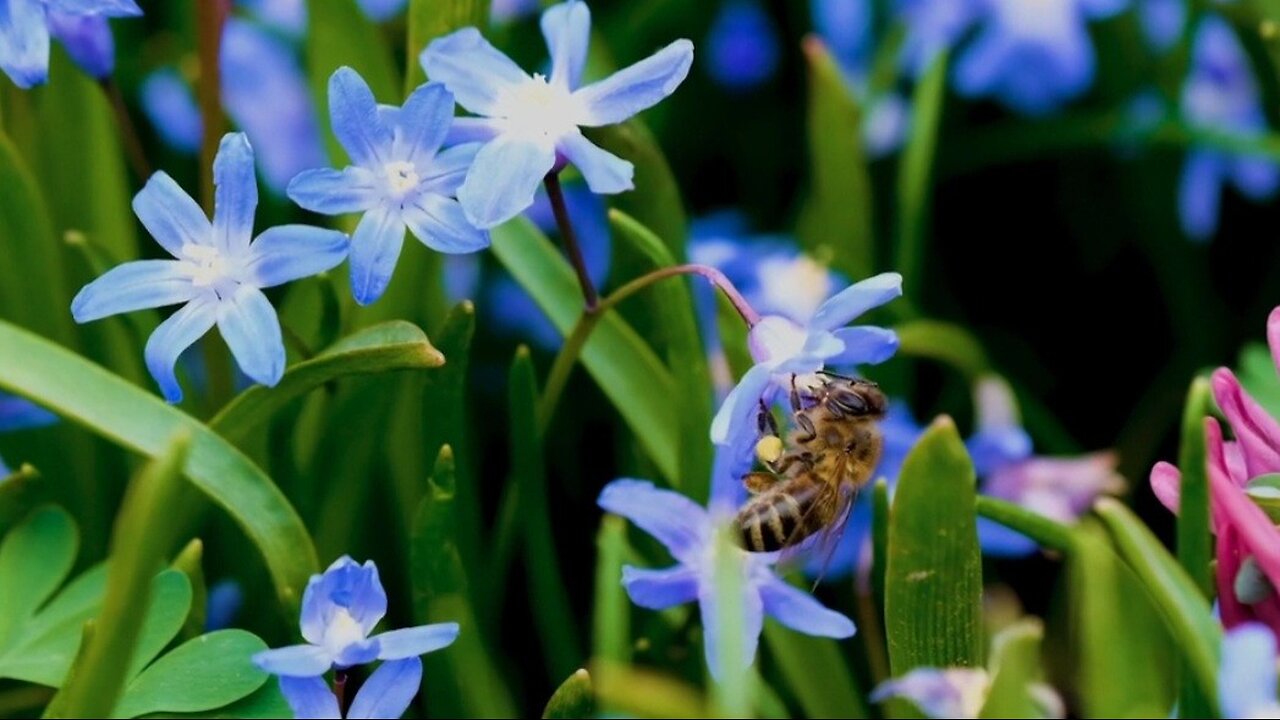Premium Only Content

"The Fascinating World of Flowers: Nature’s Colorful Architects"
Flowers, scientifically known as angiosperms, are the reproductive structures of flowering plants, crucial for sexual reproduction. Their purpose is to facilitate fertilization through pollination, leading to the development of seeds and fruit. Each flower is composed of various parts, each serving a specific function:
1. Petals: Often the most eye-catching part, petals vary in color, shape, and size to attract pollinators like bees, birds, butterflies, and even bats. Some flowers also produce scent and nectar, further drawing in pollinators.
2. Sepals: These are typically green and leaf-like, located beneath the petals. They form the protective layer around the flower bud before it opens, ensuring the developing reproductive parts are safe from environmental harm.
3. Stamen: The male reproductive part consists of the filament and the anther. The anther produces pollen, which contains the male gametes necessary for fertilization.
4. Pistil: The female reproductive part includes the stigma, style, and ovary. The stigma, often sticky, captures pollen. The style connects the stigma to the ovary, where fertilization occurs. Once pollinated, the ovules within the ovary develop into seeds.
Flower Types
Complete flowers: Have all four main parts—petals, sepals, stamens, and pistils.
Incomplete flowers: Lack one or more of these parts.
Perfect flowers: Contain both male and female reproductive organs.
Imperfect flowers: Have only one type of reproductive organ, either male or female.
Pollination
Flowers depend on various methods for pollination, the process where pollen from the male stamen is transferred to the female stigma. This can happen through:
Biotic pollination: Involving animals, especially insects, birds, and mammals.
Abiotic pollination: Involving non-living elements like wind or water.
Importance of Flowers
Ecological Role: Flowers support biodiversity by feeding pollinators and maintaining ecosystems.
Cultural Significance: They symbolize various human emotions, from love (roses) to peace (lotus). Flowers are also used in rituals, decorations, and medicinal practices.
Economic Value: Many crops, such as fruits, vegetables, and spices, rely on the successful pollination of flowers. The cut-flower industry is also a significant global market.
In conclusion, flowers are not only vital to plant reproduction but also hold a unique place in human culture and the environment, providing aesthetic beauty, ecological balance, and agricultural benefits.
-
 LIVE
LIVE
Lofi Girl
2 years agoSynthwave Radio 🌌 - beats to chill/game to
280 watching -
 LIVE
LIVE
BBQPenguin_
2 hours agoTasking & PVP
48 watching -
 LIVE
LIVE
FrizzleMcDizzle
3 hours agoGladius, Creature of the Night - NEW NIGHTLORD - NightReign
21 watching -
 8:31
8:31
MattMorseTV
1 day ago $1.61 earnedTexas just did the IMPOSSIBLE.
64.1K88 -

Rotella Games
19 hours agoGreen Hell Day 6 | We Have a LONG Way to Go
12.8K4 -
 41:26
41:26
The Mel K Show
6 hours agoMel K & Clay Clark | Financial Success Hides Behind Self Discipline: Five Pillars | 8-24-25
31.9K4 -
 LIVE
LIVE
The Rabble Wrangler
14 hours agoThe Best in the West Plays Battlefield 2042 | Road to BF6 Grind
27 watching -
 2:29:17
2:29:17
JTtheSG
3 hours agoLIVE Replay - Back To The Deadzone!!!
13.8K -
 LIVE
LIVE
The Official Steve Harvey
13 days ago $5.14 earned24 HOURS OF MOTIVATION w/ STEVE HARVEY
210 watching -
 25:56
25:56
DeVory Darkins
23 hours ago $0.86 earnedTrump drops ULTIMATE BOMB on Democrat Mayors as ICE makes SHOCKING Announcement
52K188